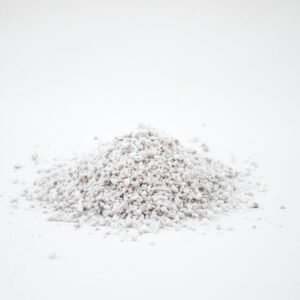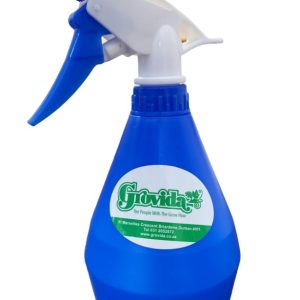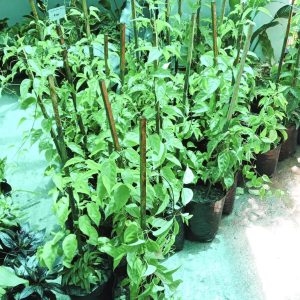
Elephant Ears is the common name for a group of tropical plants of more than 250 different species and varieties that includes colocasia, alocasia, caladiums and xanthosaoma. They are tender plants that become hardy in the warmer parts of our country, especially in the tropical climate of the KZN coast. Whereas inland places with colder frosty climates, they’re tend to be more annuals.
Though they make flowers, they are mainly grown for their large, heart-shaped foliage that adds a tropical look to any garden.
Types of Elephant Ears:
There are 3 main groups of Elephant Ears and these include:
Alocasia:
Originate from Asia and Australia. The most distinguishing feature of these plants is that unlike other elephant ears here the leaves point upwards. They prefer filtered light, but can grow in partial shade, and can grow to heights exceeding 1.8m. The tubers, or any other part of the alocasia are not edible due to their toxicity. Alocasia prefer damp soils, but will not tolerate wet swampy conditions.
Colocasia:
Colocasia are native to Asia and India. They thrive in warm weather and humid conditions. Unlike They Alocasia, they are suitable for water gardens and will happily grow in your pond. They have edible tubers and some varieties are exclusively grown as a staple food, throughout the world. Colocasia, prefer filtered light, but can tolerate both full sun and partial shade.
They are one of the tallest Elephant Ears and can reach 3m in height with a massive leafs.
Difference between Alocasia and Colocasia:
| Alocasia | Colocasia |
| Toxic | Edible |
| Reach 1.8m | Grow up to 3m |
| Leaves point upward or grows horizontally | Leaves always point downward |
| leaves are attached to the stem at the leaf notch | Leave are attach below the leaf notch |
| Leaves are often shiny | Leaves are more dull in colour |
Xanthosaoma:
These includes caladiums and are native to tropical America and love warm weather. Xanthosoma generally smaller in size, even though some can grow as high as 90cm and spread up to 60cm. Xanthosoma tubers are also edible, but they are better known for their amazing leave colours that range of pink, red, white or green.
Due to their miniature size, they are best for small gardens. They also prefer filtered light, but can grow well in shade. So these are a good choice if you want to grow elephant ears under a tree or as an indoor plant.
Ideal Growing Conditions for Elephant Ears:
Light Requirement:
The need for sunlight in Elephant Ears varies from full sun to partial shade. Most of the varieties are grown in filtered sun light or partial shade. Some darker varieties do need full sun to grow.
PH:
The ideal soil pH for growing elephant ears is between 5.5 and 7.0. Do a soil test before planting. If the soil pH is not in that range you can add various additives to bring the pH to that level.
Soil:
A uniformly moist soil that is rich in organic nutrients is ideal for growing Elephant ears. Add a generous amount of compost and manure to the soil.
These are heat-loving plants. If the soil temperature is cold, delay the planting. You usually want the soil temperature to be at least 65°F (18°C).
How to Plant Elephant Ears:
Choose the bulb carefully. The bulb should be large, plump, and firm. Remember, the bigger the bulb size bigger the plant and the bigger the leaves.
Plant the bulbs in the springs or after the danger of frost has passed. The Elephant ear bulbs sprout usually within 3-8 weeks. In warmer climates, the sprout will be faster than in cold climates. To fasten the process, start indoors, and once the environment warms up bring them outside.
Plant the Elephant Ear tubers at about 5 inches deep into the soil with the pointy side facing up. Cover it with soil and add water.
Fertilizing Elephant Ears:
These plants are voracious eaters. The best fertilizers for elephant ears are slow-releasing organic fertilizers. Bonemeal and Bloodmeal are two great choices for these plants. Stop fertilizing the plants in winter.
The Watering Schedule for Elephant Ears:
Elephant ears are water-loving plants. So make sure the soil remains moist and does not dry out, especially during the growing season. Keep watering regularly. Reduce the frequency of watering in winter.
If you are growing elephant ears in containers, water them daily during the summer. Give 2-3 liters of water per week.
Pruning Elephant Ears:
These plants produce new leaves very quickly during the growing season. So you have to prune and trim elephant ears regularly. Remove wilted, browning, or ratty leaves by cutting them off at the base of the plant.
Wear gardening gloves and long sleeves shirts while pruning elephant ears. The organic compounds in them can cause skin irritation in some people.
Elephant ear plants are toxic. The leaves and stems are the most toxic parts of the plants. They have poisonous oxalic acid crystals in their leaves and stems. Chewing or biting into this plant will release these crystals. The oxalic acid crystals then penetrate the tissue in the mouth and Gastro-Intestinal tract.
Upon contact, the plant can cause skin irritation. If you ingest it can cause swelling in the throat, mouth, and lips. It can also cause vomiting.
Are Elephant Ear Plants Edible:
All Colocasia are edible, but most Alocasia on the other hand are toxic, both to humans and animals (some more than others). No part of the alocasia plant is edible. So the plants that are in your garden may not necessarily be the same varieties that is grown for food.
You can eat the leaves and roots of colocasia, a good example of this is Taro, locally known as amadumbe (Colocasia esculenta) that is grown by the locals as a staple food. You should always eat colocasia cooked, and never in the raw form. Cooking breaks down the crystals and makes them harmless.
Never eat Alocasia!
Elephant Ear Plants Invasive:
Elephant ears can be invasive. Their huge size can create problems for other plants that live under them.
As colocasia has a rapid growth rate, especially in warm conditions. It can become huge and can escape cultivation.
As even small fragments of the corms can reestablish and colonize natural areas, they can crowd out native species.
To minimize the issue choose the right growing location for the plant. Also, clean up those humongous leaves once they are dropped.
Common Pests and Diseases:
Some common diseases of Elephant Ears are:
Mosaic Virus Disease:
You will see uneven light and dark patterns on leaves once the plant is affected. Sometimes you can clearly see ring spots and the growth of the plant becomes stunted.
This virus is spread mainly by aphids. To control the spread remove infected plants immediately.
Aphids:
They feed on the undersides of the Elephant Ear leaves.
Use a pest control pesticide to fight aphid problems.
Root Rot Disease:
A number of pathogens cause root rots.
Improve the soil drainage. This is the only way to control root rot.
Here are some of the common elephant Ears pests
Mealybugs:
These are 1/8 to ¼ inch long flat wingless insects. They form cottony-looking masses on stems, branches, and leaves and suck the juices from leaves and stems. This causes weak plant growth.
Wash the infected plant parts. Use predator insects to control the bug population.
Root Maggots:
These white maggots feed on the roots and cause wilted leaves. They also leave brown tunnels in the root.
Use organic pest control methods to control maggots.
Spider Mites:
Spider mites suck on the plant juice. They cause white dots on the foliage. You can also see webbing on the plant. With time the foliage will turn yellow and become dry.
Use insecticidal soaps and other organic pest control methods to control the population.
What to Grow With Elephant Ears:
Different elephant ear plants have different leaf colors and shapes. So you can try other plants to grow with elephant ears.
Some cool choices are ferns of contrasting colors, begonias, and plants with smaller leaves.
Some Tips and Tricks For Growing Elephant Ears:
- If you love elephant ear plants, but you’ve got young children or pets, you might try a few strategies to prevent accidental poisoning.
Elephant Ears Leaves Are Turning Yellow
There are several reasons why your elephant ears are turning yellow. Improper light to water ratios, problems with the plant roots, or the plant may be becoming dormant (which is normal for winter and fall). Finding and correcting the reason behind the color change will help your elephant ears greatly.
Improper Light to Water Ratio:
One of the main reasons behind the yellowing leaves of your elephant ear plants is an imbalance in light to water ratio. An elephant ear plant needs lots of water to grow. Lack of water can hamper its growth. But they also need 6-8 hours of daily sunlight. Without proper sunlight, most elephant ears won’t grow.
The yellowing of the plant leaves could mean either the plant is getting too much light but not enough water for its liking or it might be getting lots of water but is not getting enough sunlight to thrive.
To solve the problem first change the amount of sunlight the plant is getting. If your plant is in containers it will be relatively easy. Move the plant to a sunny window or terrace.
If this doesn’t solve the problem then change the amount of water. Also, add a bit of fertilizer to your plant.
Test how your plant is performing by giving more or less light or more or less water, on weekly basis. Just change one condition and keep others intact. Continue these tests until the yellowing of the leaves stopped completely.
Problem with the Roots:
Another reason for the yellowing of elephant ears leaves can be improper planting. If the root structure of the plant somehow got stuck in the pot and doesn’t have enough space to grow it can result in yellow leaves.
In this case, the yellowing first takes over the edges of the plant and then covers the whole leaf. A too-small pot is usually the main reason why this happens. See if you can see the roots of the plant sticking out. If it does, repot the plant immediately.
Dormancy:
It can also be the dormancy for which elephant ears turn yellow. Remove the yellow leaves and wait for the next season.
Tips For Growing Elephant Ears In Pots:
Here are some useful tips if you are growing elephant ears in pots:
Choose The Right Spot:
Though elephant ears can handle direct sunlight too much of it over time, can burn the plant. Ideally, for most elephant ears do best in bright indirect (filtered) sunlight, but will also flourish in partial shade. Choose an area where it can receive that kind of light.
Arrange Proper Humidity:
Elephant ears need humidity to thrive. Put a humidifier in the room to increase the humidity to the desired level. You can also stand the container with the elephant ear in a shallow plant saucer with water to increase the humidity level.
Maintain A Proper Temperature:
The ideal temperature for growing elephant ears ranges from 18°C-23°C. So try to maintain that range inside your room when you are growing elephant ears.
Choose A Right Sized Container:
Elephant ears need comparatively larger pots than other houseplants if you are growing them indoors. Your pot should not be too small for growing elephant ears. If the root lack space, it can harm your plant.
Use A Good Quality Soil To Fill The Pot:
Use well-drained, nutrient-rich soil to grow elephant ears. Don’t just put any soil at your disposal. Use a mix that is meant for growing plants in containers.
Fertilize Regularly:
When you grow elephant ears in pots they need fertilizers regularly. Use an organic fertilizer like Nitrosol to feed the plant. Once they reach dormancy in winter stop fertilizing the plant.








